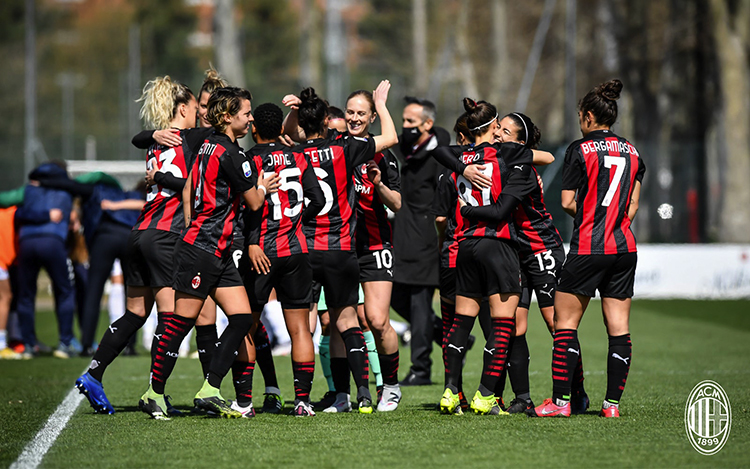Today AC Milan announced the debut of a Women’s Primavera (U19) team this season, under Davide Corti. This is huge news for the women’s sector of the club and another step towards the much-needed professionalism, which will arrive in Serie A next season.
Now is the perfect opportunity to break down the benefits that comes from having a good and strong youth team and, also, look at the Campionato Primavera format and rules for this season and the upcoming 2022/23 season.
Some familiar faces in the roster
The 19 player-roster was also announced and some familiar faces for us are listed. Italian defender Maria Vittoria Nano and midfielder Carolina Morleo, who have both featured in the first team last season, are there and that makes them the most experienced players in the squad, so far. Nano had 2 appearances last season, 1 in Serie A and 1 in Coppa Italia, while Morleo had 3, 1 in Serie A and 2 in Coppa Italia.
More experience and playing minutes
As the AC Milan Men’s team have proved over the years, having a Primavera team is a crucial step into developing and giving experience to young players with potential to become a future star, a real asset. A home-grown talent is to be nurtured and given chances to evolve on its own pace and having a U19 team allows it to happen in the club, under the guidance of Milan’s professional and, especially, under Ganz’s eyes.
Furthermore, as we will see further ahead, competing in the youth league means more games, more competitive games not only for those under the age of 19, but for some other players who are struggling to find their places in the first squad.
Campionato Primavera: Rules and regulations
Format
The Youth League (Campionato Primavera), organized by the FIGC, this season consists in a 26-club league (12 from Serie A and 14 from Serie B) and kicks off on September 26.
According to the rules, those 26 teams are to be split into 2 groups (A and B) of 13, following some criteria like geographic proximity and strength balance between them, with home and away games. The 4 best clubs in each group advance to the quarterfinals to face each other on two-legged knockout ties, in the following format:
Quarter-final (Q1) 4th group B - 1st group A
Quarter-final (Q2) 4th group A - 1st group B
Quarter-final (Q3) 3rd group B - 2nd group A
Quarter-final (Q4) 3rd group A - 2nd group B
The winners make it to the semifinals and final. Both stages are one-legged ties and, if the teams are level at the end of regular time, they go straight to the penalty shootout.
Who is allowed to play?
The rules say the clubs must submit a maximum 20-players list, all born in 2003, before the games, however, there are a few exceptions for this rule.
During the group stage, the teams are allowed to subscribe two players over 19, being 1 born in 2002 and another at any age. From the quarterfinals onward, each team is allowed to have 2 players born in 2002, if they have played 7 games in the group stage with the Primavera team.
It means that, during the group stage, with 24 games to be played, Davide Corti might give youngsters Miotto, Cortesi or Kirschstein, for example, or any player in the first team for that matter, during the competition’s group stage, some much needed playing minutes.
More games, more experience, more players. The Women’s sector of AC Milan is laying the ground for a bright future.














